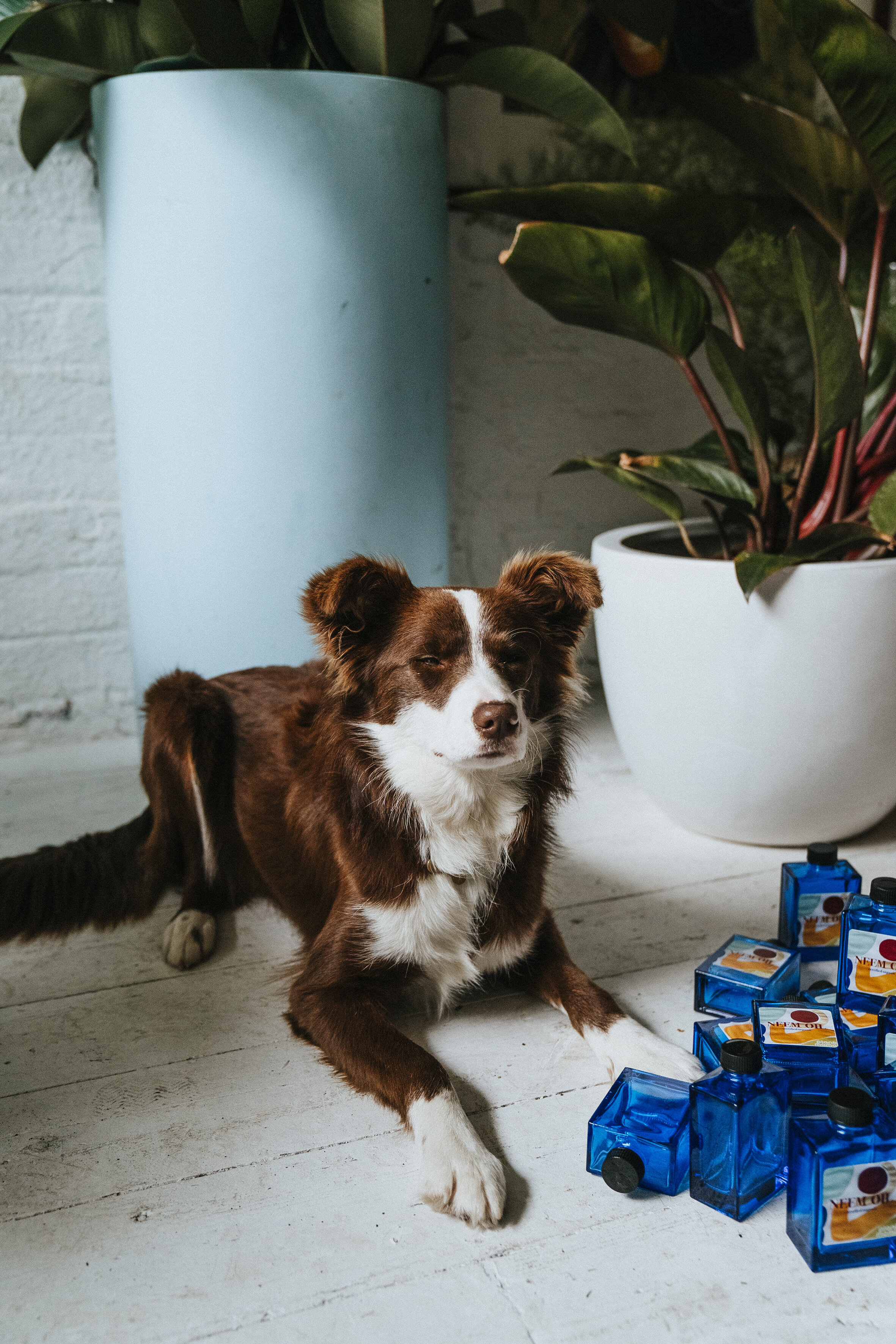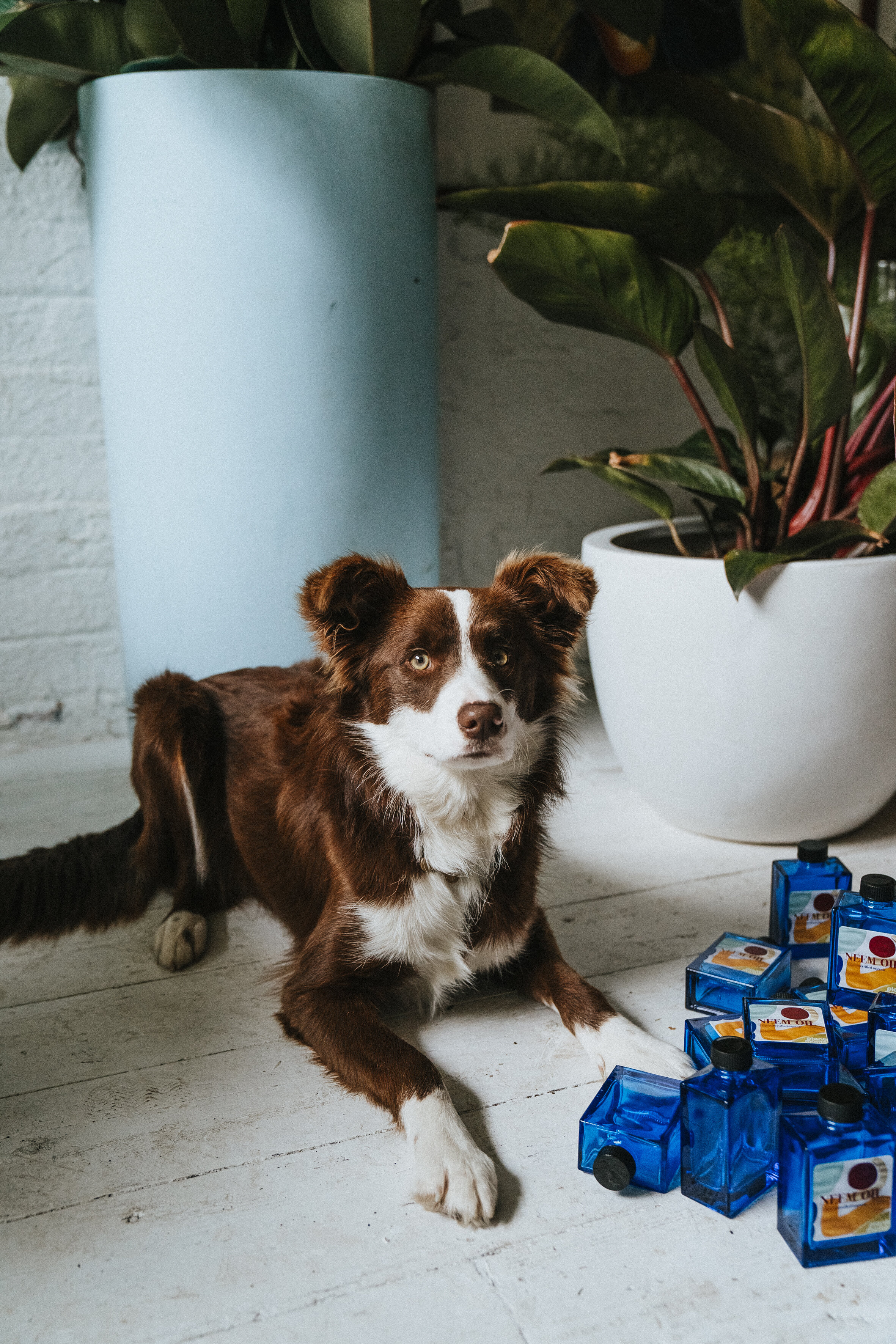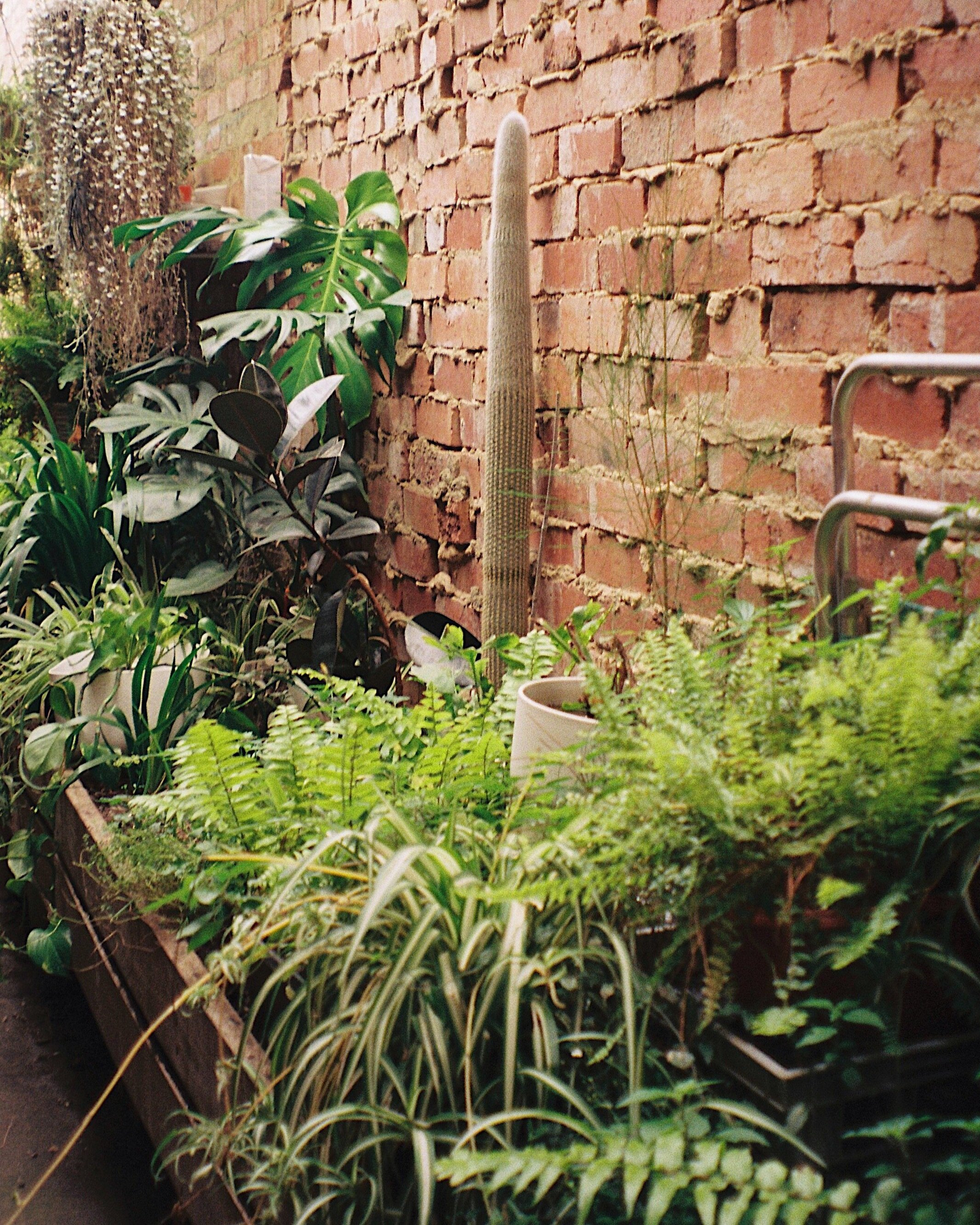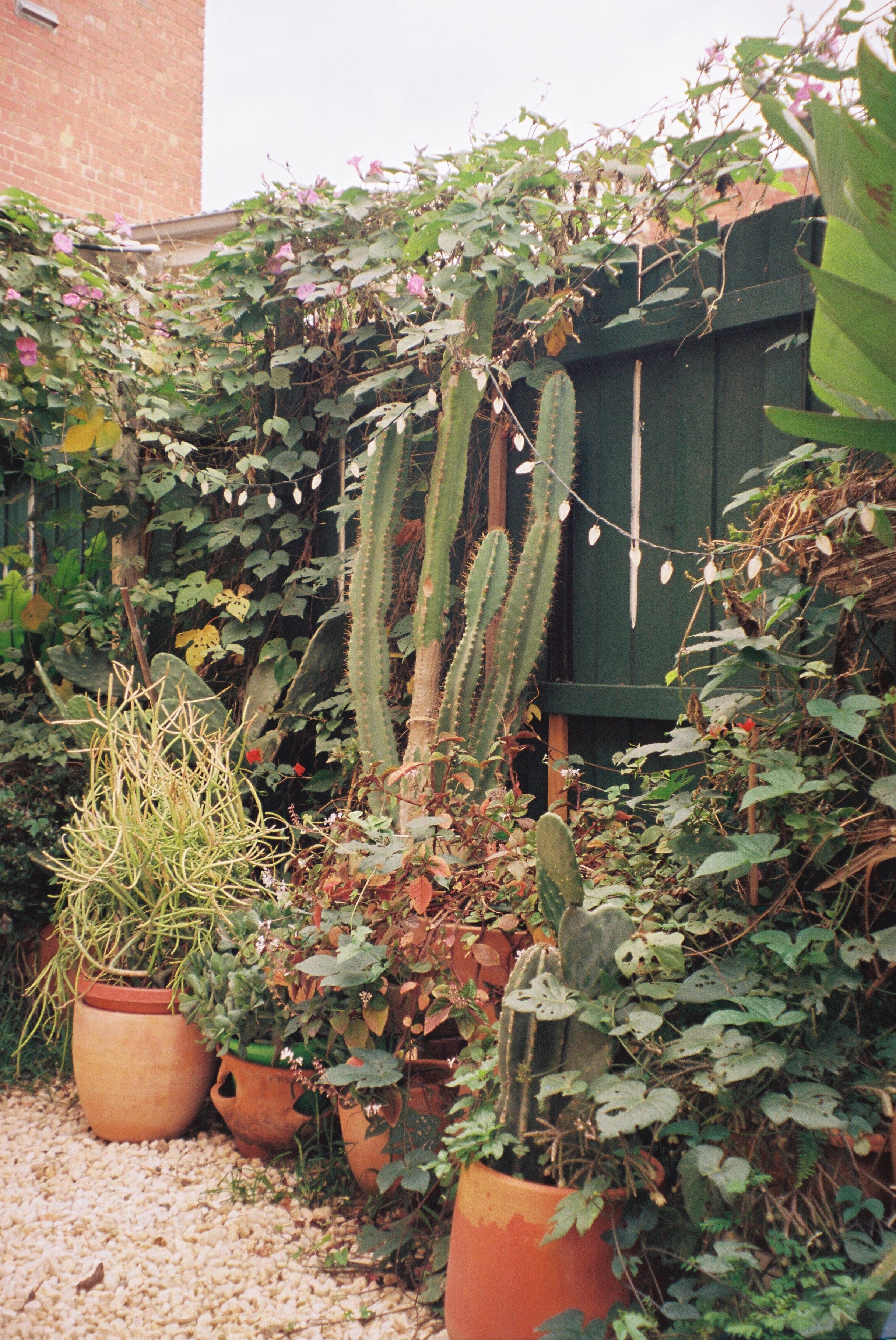STAYIN’ ALIVE
Winter plant woes - and HOW TO SOLVE THEM
“A person who never made a mistake never tried anything new.” Albert Einstein
SO OUR FIRST PLANT BLOG TOPIC IS ONE THAT CAUSES A LOT OF STRESS TO A LOT OF PEOPLE - indoor plants and their health in winter. Normally around September/October I get flooded with emails from people wondering what has happened to their plants, and in those emails I always seem to find a personal sense of failure that they feel. When really it’s just about educating yourself on how plants change in the seasons, and how to alter your care to keep them thriving.
Much like yours truly, plants core temperature runs warm. And they enjoy being amongst an environment that mimics tropical or sub-tropical climates. Hot sun, slight hydration mist, fresh sea air, cute Italian boys, cold Aperols, frothy Freddo espressos - wait SORRY - we got side tracked there. If you live in Melbourne and you are FROZEN TOO, you will understand why I went off with sun fairies for a hot second. Absolute sidetrack moment but a valuable one at that - I have survived in this city ad its winters purely because of Nimbus & Co. Private saunas, no creepy old dudes, naked (no togs - YES), and there are inbuilt speakers so you can warm up and podcast out. I may regret telling you all this, but luckily the owners are MY FRIENDS so I shall steal ya spot. Okay, great!
Back to plant thangs! Before the horticulture police come knocking on my door too, I am giving very broad advice here, so don’t hold a gun to my head if the information doesn’t suit your jungle environment. Every city's winter is different - what we feel down here in Melbourne is very different to what Queenslanders feel in winter, and our plants are the same. Also bare in mind, not all below advice suits all varieties of indoor plants, but I have collated information for you that will deal with the basics and cover the needs of your most common indoor plant varieties. If you require more information: the interwebs and Google can become your best friend.
Lighting and positioning:
During winter most plants will enter a “dormant” stage where growth will slow down and they will ‘rest.’ This is due to a number of factors, but mainly because not only is there less light present during winter, but also the sun shines at a lower angle. Therefore some plants will need to change location and be repositioned into brighter locations within your houses/studios/offices. You will not need to move plants if they are still receiving a good portion of the light requirements that they need, but you will need to move them if the sun misses them in the house over winter. Things to do to help:
Move plants to a location that gets more Winter sunlight. Some cities have gnarly morning frost, so consider somewhere in the house that receives good afternoon light.
Be careful to not place against a sunny window. Just off the window is recommended as putting it too close to the glass can burn the leaves as the window glass goes from super hot to super cold.
Research your plant's light requirements and ensure you aren’t going too hard on the light change. Boston Ferns can burn very quickly in direct sun, so whilst it may need more light in Winter, consider overall how the position change might affect your plant.
Rotate your plant in its position every few weeks so the other side of the plant is receiving light. This ensures your plant has even growing patterns.
Clean windows thoroughly (okay Mum!) to ensure that the most amount of sunlight can transmit onto your plant babies
Wipe down and remove dust from plant leaves to ensure that light can penetrate the foliage deeply. You can use our Neem Oil to create the perfect leaf shine solution to do this. Plants like to absorb nutrients, air and water through their leaves - so having clean ones will aid in this.
Watering
Water is responsible for most homicides within the plant community, and especially over winter! Watering can be tricky over winter because whilst most plants need less watering, the introduction of consistent and constant heating can dry them out faster than they do in Summer/Spring! Consider these things:
ALWAYS test the soil of your plants first, and by testing I don’t mean ‘looking’ at it and thinking that it's dry. Get that chubby finger out and push down 1-2 inches into the soil to determine whether it feels dry or moist. If it’s dry then water, if it’s moist then hold off. Amongst all of the confusing watering information out there, this will always give you your answer as to whether to proceed with watering or not. Each person’s environment is different based on their heating, occupants, light, air flow etc etc - so giving a broad Winter watering timeline doesn’t work - you must check your own plants and their needs first.
Water less amounts and ensure that they are never sitting in excess water, make sure they have completely dried out before watering.
You might need to water twice as much if the heating is constantly on and your plants are drying quickly. But to ensure they don’t get too much water, lesson the amount of water. So more often with less amounts. This may not apply to all plants, but if you spend a few weeks watching how their intake or notice how they hold water, you will start to work it out what it needs. Don’t stress too much about this - the finger test is always your answer when in doubt!
Try and use room temperature water so that the plant roots don’t go into shock, I fill my watering can and just let it sit for 30 minutes before watering.
Cacti and succulents need the least amount of water over winter, whilst I still check mine from time to time - I don’t really water over Winter as they are already water sensitive and the cool air provides adequate moisture.
Humidity and air
Besides watering, the much needed ‘heating’ factor that we all require in order to defrost, has an astounding factor on the health of our plants. So, let's just spend some time trying to better understand the how and why of this. Plants need humidity to survive because most originate from tropical or subtropical zones. However, when your roommate Jarryd (sorry all Jarryds) decides to hit 28 degrees on the heater remote and the room instantly fills with hot and stuffy air, your plants aren’t too stoked. So remember these few key things:
You want to avoid any extreme temperature changes to keep your plants healthy. Keep them out of cold draughts or open doorways and ensure that they aren’t sitting directly in front of heaters, vents or fireplaces.
When turning on the heating, try to slowly raise the temperature instead of hitting it on a blast heat fan. Whilst YOU may not defrost as quickly as you wish, your plants will have an easier time adjusting to the new temp change.
Plants enjoy having a humidity level around fifty percent, but most homes can drop down to ten to twenty percent in winter. By grouping and placing your plants together in a cluster, they will feed off and share more humidity as plants release moisture from their leaves. You can also place a bowl of water near this plant cluster, and the plants will use the evaporated water to assist in moisture feeding.
The stuffy hot air suffocates me, so you can only imagine what it is doing to your plants lungs. Every so often, open a window or door in the room to let some fresh air. They will appreciate it - VERY MUCH
Some people will say ‘mist’ them, but I have personally found that sometimes this in combination with heating can create mealy bugs on the leaves.
If you own a humidifier, put it on near the plants. They will love a little session!
Pests, repotting, pruning and fertilizing
This is a tricky topic, because I have heard both sides of the “fertilize in winter” argument. I am going to recommend what has worked for me, and I’ll let you do your own research if otherwise.
Personally, I don’t fertilize houseplants in winter as they are not in a state of active growth. I believe that this is the time for them to rest and therefore I let them do so. Much like me, they like to hibernate in the winter. Do they also like red wine and fresh spaghetti? In the past when I have fed over winter as a test - I have not had much success. So in my opinion, leave it.
Begin fertilizing again in Spring when the plant has woken back up
Winter is a good time to prune or clip any unhealthy leaves or stems to prepare for new shoots in Spring. Giving the plant a trim where needed ensures that much needed nutrients are sent to the best parts of the plants - not the half dead sections that will wither away in time anyway.
If you can avoid repotting in winter, then do so and wait until Spring. The root base of your plants will not enjoy being moved out of their homes during winter - much like us.
Due to the extra dry air filling our homes, you might start to see some pesky indoor plant pests making their way into the topsoil of your plants. The dry air can encourage scale insects, mites and gnats to flourish and grow in numbers. You want to eliminate them when they appear to avoid it escalating. Identifying the problem is the first step and there are loads of photos and resources online to assist. Our Neem Oil, purchased here, is an organic Pesticide and Fungicide and can best aid in the removal of most common insects. The bottle will get you 20L of pest solution and leaf shine (THAT'S A LOT) and it's organic, biodegradable and non toxic. We sold out the first patch in 24 hours and we have the next arriving this week, SO GET ONBOARD!
Our first baby.
Pheeewwwwwww!! I am aware that the above is a LOT of information, however as Sir Frances Bacon says: “Knowledge is Power.” I hope BOTH you and your plants survive Winter and we all come out of it on the other side and ready for our next season and in my personal opinion, the best season for indoor plants and just humans in general: Spring!
Love to you by the bucket loads and I hope today THE DISCO FOUND YOU!
P Mami xx
P.S. IF IT DID’N’T FIND YOU - HERE IT IS
P.P.S I launched this blog this week - HOORAY. To read ‘Why I think introverts have the best houses’ see here To see why Big Magic might be the best thing you’ll ever read to bring creative magic into your life: see here. To laugh, see here And finally to fill that cute soul of yours, see here
P.P.P.S Don’t steal the above work and spit it out as your own, I can see y’all. It took me hours to craft the above. Either reference, link or re-word in your own voice, remember doing assignments in high school - like that. Respect the process, the crafter and the effort. x






